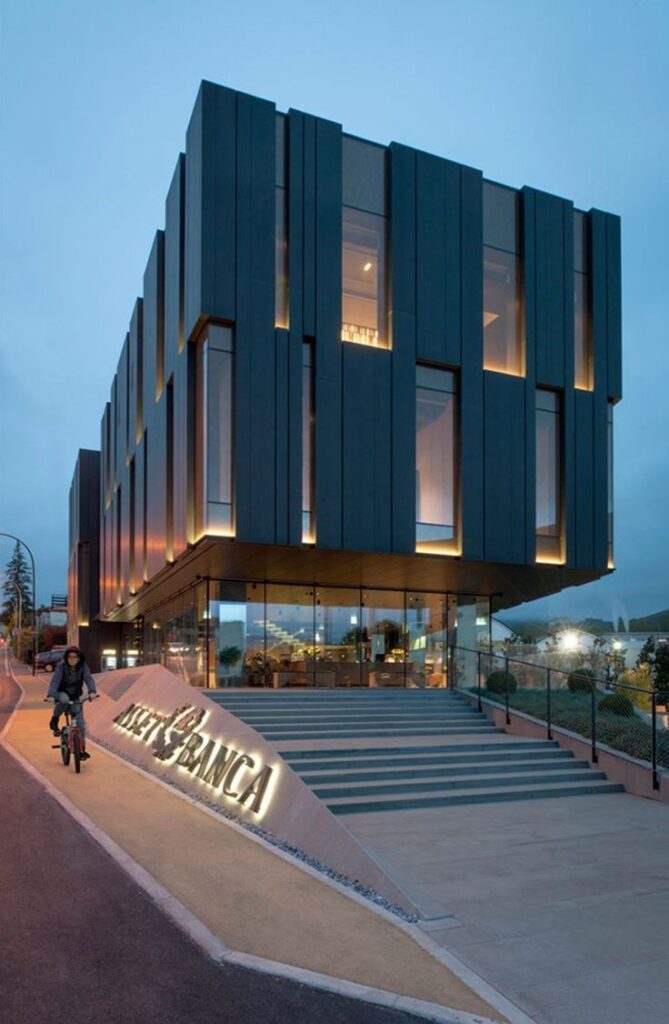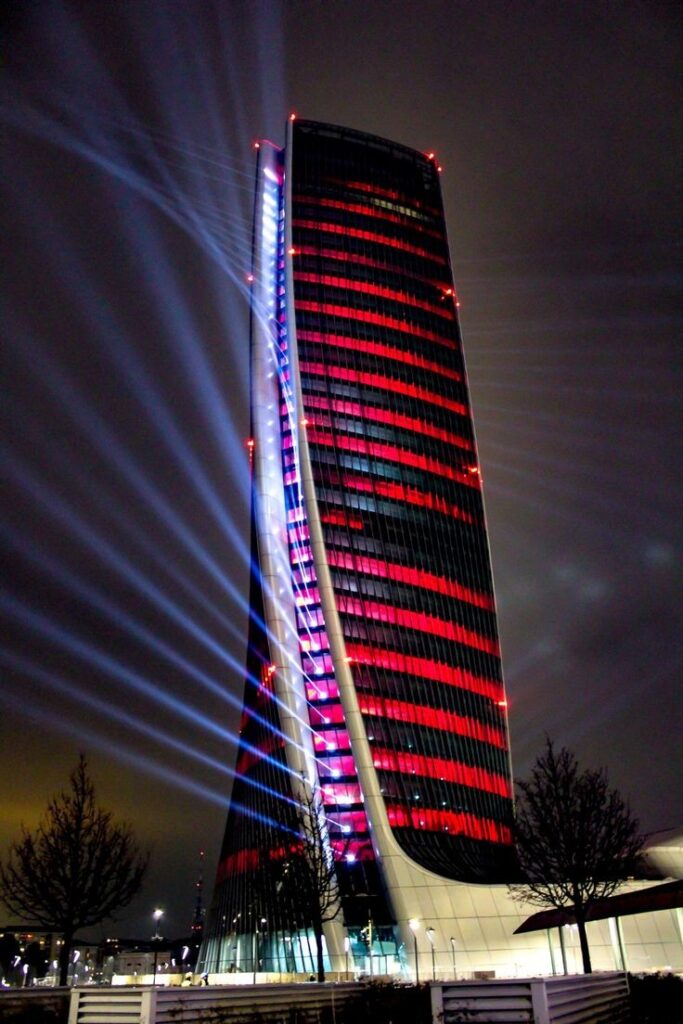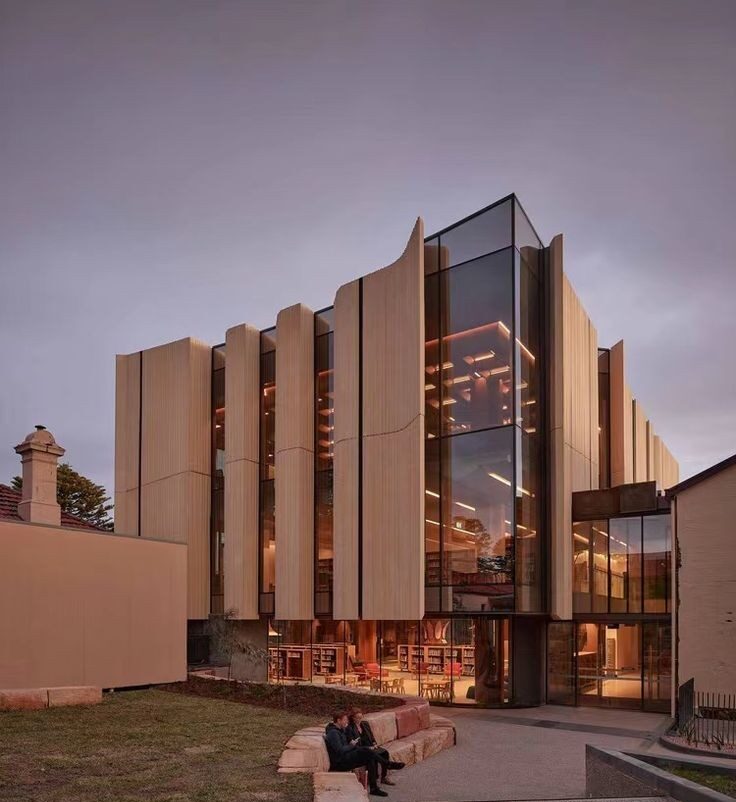High rise building lighting is one of the most captivating aspects of urban design that in addition to enhancing visual appeal contributes to identity creation and a unique character for cities. This type of lighting utilizing advanced techniques and technologies adds a distinctive charm to the exterior facades of tall buildings attracting attention during nighttime. High rise building lighting not only plays a role in modern design and architectural prominence but also contributes to energy efficiency and environmental sustainability by choosing low-consumption LED systems.

Principles and Techniques of High Rise Building Lighting A Comprehensive Guide
High rise building lighting is one of the most essential elements in enhancing and highlighting urban architecture. Its proper implementation requires adherence to specific principles and techniques to ensure not only visual appeal but also functionality and energy efficiency. The following are the key principles and techniques for high rise building lighting:
Principles of High Rise Building Lighting:
- Emphasis on Architectural Features: Lighting should be in harmony with the architectural features of the building highlighting details such as lines protrusions and distinctive surfaces.
- Creating Visual Identity: Using colors, light patterns and specific techniques is essential to distinguish the building from other structures. Lighting can create a unique identity for the building.
- Harmony with Urban Environment :Lighting should not cause light pollution or disrupt the overall city scape. Matching colors and light intensity with the surrounding environment is crucial.
- Energy Efficiency: Utilizing low-consumption and long-lasting LED lights is the best option to reduce energy costs and maintenance.
- Safety and Durability: Lighting equipment must be resistant to weather conditions such as wind, rain and varying temperatures.
Techniques of High Rise Building Lighting:
- Linear Lighting: Using strip or linear lights to emphasize the lines and height of the building. This technique accentuates the building’s verticality and structural solidity.
- Wall Washing: In this method, the building’s walls are illuminated with a uniform and soft light to create a calm and striking appearance.
- Spotlighting: Employed to highlight specific architectural elements such as towers, columns or decorative symbols.
- Dynamic Lighting: Using color changing or moving lights to create animated patterns enhancing the building’s appeal especially during events and celebrations.
- Crown and Roof Lighting: Illuminating the uppermost parts of the building such as the roof or spires to draw the audience’s attention.
- High-Contrast Lighting: Combining light and shadow to create a three dimensional effect and add depth to the building’s facade.
Practical Guide for Implementing High Rise Building Lighting:
- Preliminary Study: Detailed examination of the architecture, surrounding environment, and project requirements.
- Choosing the Right Equipment: Utilizing waterproof and durable lights with high efficiency.
- Designing Smart Control Systems: Managing light intensity and color to adjust lighting at different times.
- Compliance with Urban Regulations: Ensuring the lighting design complies with regulations related to light pollution.
Implementing professional high rise building lighting is a blend of art, technology and science that in addition to aesthetics leaves a lasting impact on the urban environment.

Best Lighting Ideas for High Rise Buildings
Lighting for high rise buildings due to their height and visual significance must be designed with creativity and precision. The best lighting ideas for these types of buildings generally emphasize a combination of aesthetics, energy efficiency and modern technologies. Here are some of the best ideas for high rise building lighting:
- Linear Lighting: Creating illuminated lines along the building or on its edges is an effective way to emphasize its height and structure. This technique gives the building a modern and minimalist look enhancing its visual appeal.
- Dynamic Lighting: Using LED lights with color changing capabilities and moving patterns is an attractive option for highlighting the building. This method is particularly eye catching during events and celebrations.
- Roof and Crown Lighting: The crown or roof of the building is a key area for lighting. Using powerful lights or special patterns can have a remarkable impact on the city scape and give the building an iconic appearance.
- Architectural Lighting: Focusing light on architectural details such as windows, columns or distinctive protrusions enhances the design artistry of the structure. This approach adds depth and character to the building.
- Colored Lighting: Utilizing different colors for facade lighting can give the building a lively and dynamic feel. Combining colors with gradual transitions creates an artistic and eye catching effect.
- Shadow Lighting: Creating contrasts between light and shadow to highlight the building’s three dimensional details increasing its depth and beauty. This method is particularly effective for buildings with complex or historical facades.
- Ambient Lighting: Using soft and subtle lighting to illuminate the surrounding environment ensuring the entire structure stands out at night in an attractive and harmonious way with its surroundings.
- Integrated Lighting: Incorporating hidden lights within the building’s structure so that the light source isn’t visible. only creating a beautiful and seamless glow.
- Media Façade Lighting: An innovative idea where the building’s facade turns into a large display screen. This technique is used for showcasing images, animations and advertising messages on skyscrapers and high rise buildings.
- Ground Up Lighting: Using lights that shine upwards from the ground is a popular method for emphasizing the building’s height. This approach gives the structure a grand and majestic appearance.
Impact of Lighting on the Beauty and Appeal of High-Rise Buildings at Night
- Highlighting Architectural Features: Professional and strategic lighting can effectively showcase the architectural details of a building such as lines, protrusions and unique facade designs. This highlighting ensures that the building maintains a distinctive and eye catching appearance even in the darkness of night.
- Creating Identity for the Building: Appropriate lighting can give the building a unique identity transforming it into a landmark among urban structures. This is particularly important for commercial buildings, hotels and iconic towers.
- Creating Visual and Artistic Appeal: By using colors, patterns and various lighting techniques an artistic effect can be added to the building. Moving lights, color transitions and dynamic displays create a unique visual experience for viewers drawing attention to the building.
- Harmony with Urban Environment: Lighting high rise buildings can contribute to the nighttime identity of a city and by illuminating the night sky enhance the sense of safety and vibrancy in urban spaces.
- Emotional Impact and Spatial Attraction: Beautiful and professional lighting of high rise buildings can evoke positive emotions such as tranquility, wonder or energy in viewers. This impact is highly effective in attracting tourists and enhancing the visual appeal of cities.
- Emphasizing Height and Grandeur: Using the right lighting techniques to emphasize the building’s height conveys a sense of power and solidity. Techniques like linear lighting or ground up illumination make the building appear taller and more majestic.
- Advertising and Audience Engagement: High rise buildings with creative lighting designs can become visual media platforms used for advertising, brand displays or hosting events.

 English
English العربية
العربية

















